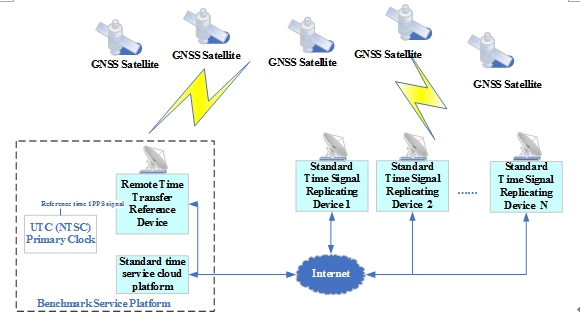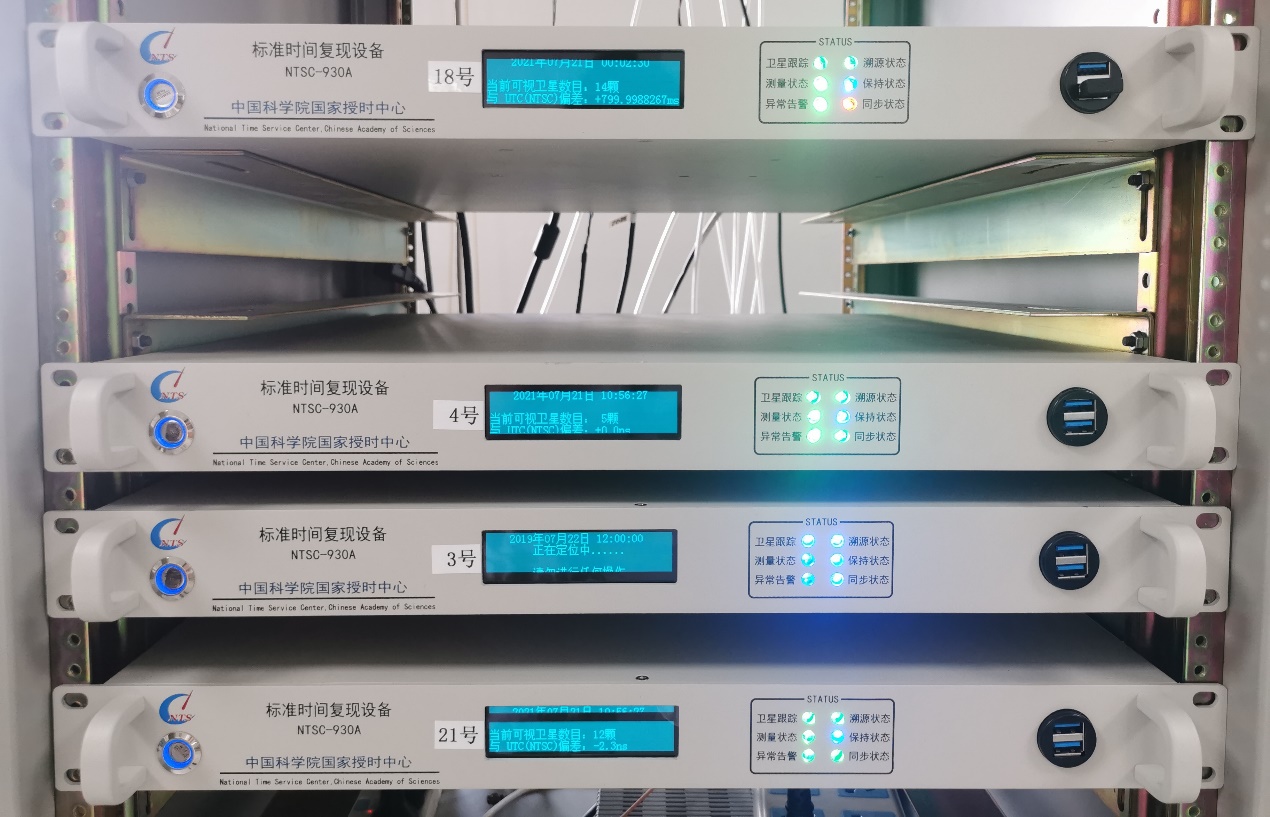Research group from the Time and Frequency Measurement and Control Laboratory of the National Time Service Center (NTSC), the Chinese Academy of Sciences (CAS) achieved a series of results in clock steer, remote time comparison and other technologies, completed the standard time remote replicating system engineering construction, passed the acceptance test after years of research. It has the ability to provide domestic and foreign users with a time signal whose deviation from the national standard time is less than 5ns.
The basic composition of the system includes remote time transfer reference device, standard time service cloud platform, and standard time signal replicating device that provides services to users. (shown as figure 1)
The system can accommodate standard time replicating with different performances and unlimited number of standard time signal replicating device. The basic principle of standard time remote replicating technology is to use GNSS satellite common-view, all-view, PPP and other methods to achieve long-distance, nanosecond comparison of time, and then, according to the comparison result, the frequency source of the user terminal is controlled to output a signal synchronized with the clock of the reference terminal. Ground users at home and abroad can obtain UTC (NTSC) time signals and frequency signals synchronized with the remote time transfer reference device through standard time signal replicating device. The physical object of the standard time signal replicating device is shown in Figure 2, with a volume of 1U.
This research obtained 5 authorized invention patents, and published more than 40 academic articles. At present, more than 20 sets of standard time signal replicating device have been provided to relevant units.

Figure 1 The composition of the standard time replicating system (Image by NTSC)

Figure 2 The physical object of the standard time replicating devices(Image by NTSC)
 Print
Print